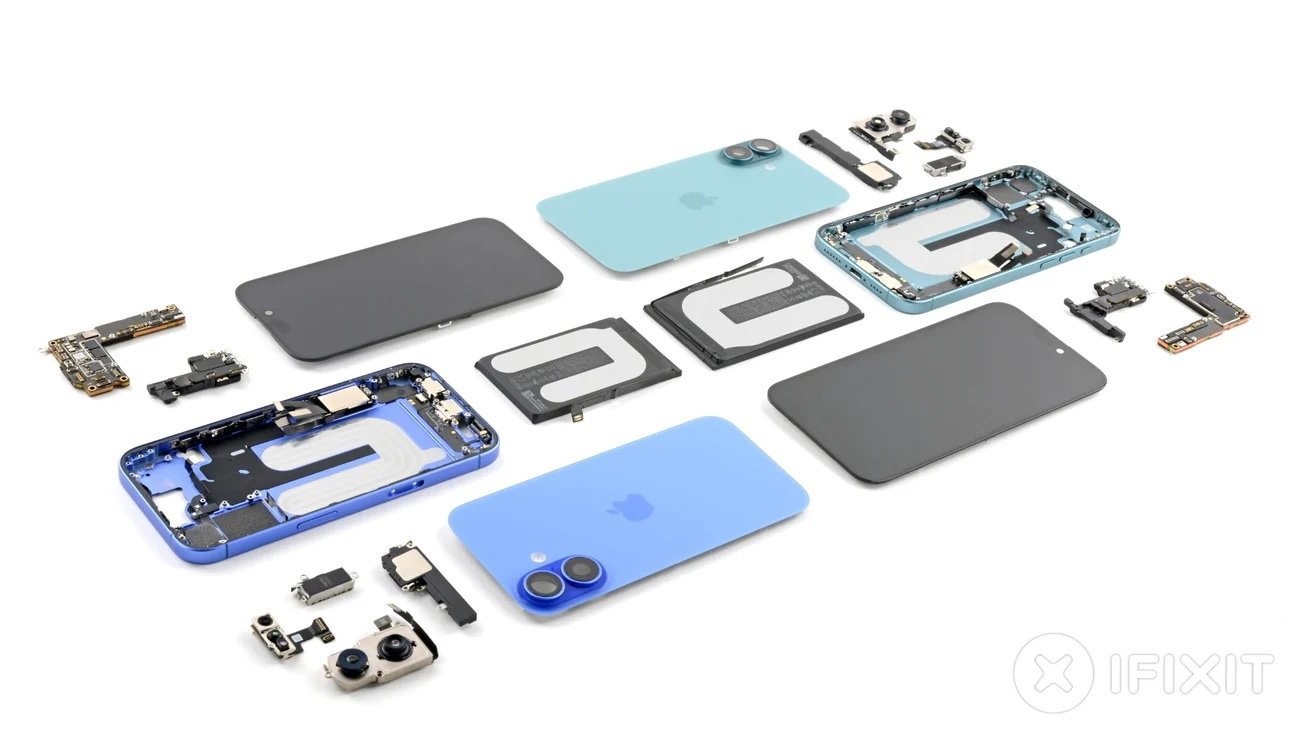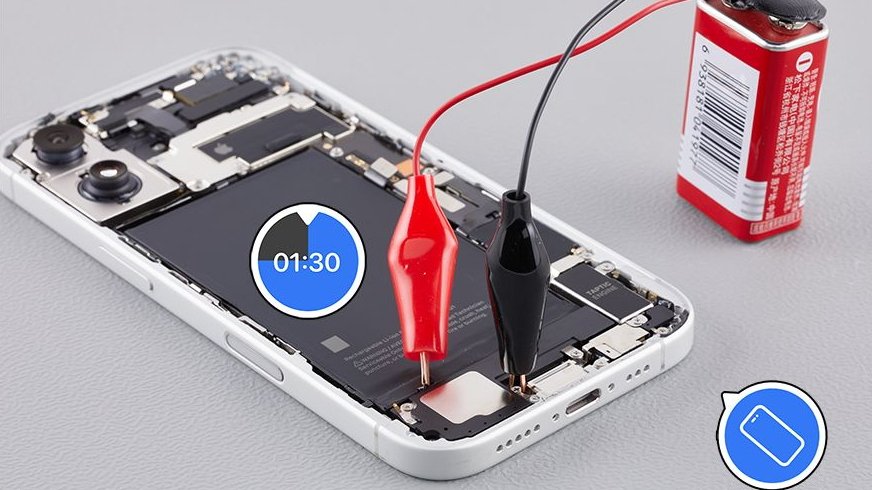Repair site praises new iPhone 16 line as the most repairable yet
The traditional teardown by repair site iFixit has given the iPhone 16 lineup the highest repairability score of any previous iPhone, thanks to three key changes in the design and internals that make it easier to access components.

The iPhone 16 lineup is easier to disassemble than ever before. Photo credit: iFixit
The rating, which is provisional pending Apple's release of parts, is based on what iFixit identifies as three major changes. As noted in an earlier teardown, rumors of Apple encasing the iPhone 16 Pro battery in hard steel case have proven to be true.
"Hard cell batteries instead of soft pouch batteries won't get accidentally punctured by a slip of a screwdriver, and so they're way less likely to catch fire," iFixit noted on its blog, greatly reducing the risk of battery damage. The company also praised Apple's change to a new adhesive that secures that battery, which can now be debonded when one passes an small electrical current through it.
The third factor noted was the expansion of the ability to disassemble the iPhone either from the front or back, increasing the ease of getting to the specific components that need repairing. This feature actually debuted on the base model iPhone 14, but it has now come to the iPhone 16's Pro models as well.
The iFixit blog referred to these changes as "big leaps for repairkind," which allowed for a more consistent and easily-repeatable repair process. Apple's own battery repair guide provided to AASP technicians shows that the debonding can be done with two leads from a household 9v battery.

Apple's AASP repair guide shows how to debond the battery case using a 9v battery.
Harvesting OEM parts made easier also
The iFixit blog also praised Apple's new "Repair Assistant" program to assist AASP technicians and DIY-ers alike to be able to calibrate and confirm proper "parts pairing" when using new or harvested OEM parts to repair an Apple device.
"When we tested it out with the iPhone 15 series earlier this week, we thought it was promising, if not quite ready for prime time," the company noted. "But it worked impressively smoothly on our vanilla iPhone 16: one click to pair and calibrate all components at once, and no bugs to be found."
The Repair Assistant feature in iOS 18 may or may not work with some compliant but third-party repair components, however. The software could also become a nuisance to buyers of used iPhones who were unaware of previous repairs, or any use of third-party parts.
Apple's own repair guide notes that using a 9v battery can debond the battery casing in the iPhone 16 in about a 90 seconds. iFixit's comparison used a 12v battery, and was able to debond in 60 seconds.
The full iFixit teardown also revealed that there's more to the new Camera Control activator than meets the eye. The company was pleased to upgrade the repairability score of the iPhone 16 line to a seven out of 10; the iPhone 15, by comparison, scored a four out of 10.
Read on AppleInsider

Comments
Oh I'm sure they'll find something to bitch about. The EU is never happy no matter what Apple does for anything whether it's a piece of hardware, software or their services.
Repairs done poorly are still a risk. Ever been inside an AASP repair facility? There's a bucket of sand and a fireproof safe next to every technician, and there's a reason for that. People have died from explosions involving smartphones (or more often, their cheap replacement chargers). No terrorist organisation required.
"Summary
https://circulareconomy.europa.eu/platform/sites/default/files/202212/Repair%20sector.pdf
There are numerous directives, among them the updated Batteries directive, right to repair etc that are due to come into effect under the broad umbrella of the EU's green goals and the circular economy.
"Regulation (EU) 2024/1781 of the European Parliament and of the Council (6) lays down, in particular, supply-side requirements pursuing the objective of more sustainable product design at the production phase."
A lot of research has gone into the subject of design for repair side of things. A lot of it funded by the EUs Horizon 2020 project.
For example this...
https://prompt-project.eu/results/design-for-product-repairability/
Unfortunately, that’s a realistic scenario
In addition, I can't even imagine a scenario where I wouldn't have Apple do the repair themselves.
There are a lot of studies underway looking deeply into better design practices with repair in mind. There is also the issue of 'design protection'.
It's a multi-pronged initiative and Apple has been consulted along the way (along with all major industry players) so it knows where regulations are headed.
It will probably not be in manufacturers' best interests to make things not feasible for repair as they may end up paying more in the long run.
There is a proposal for devices to carry repairability labels so consumers can know up front how repairable a device is. That is due for 2025.
In past human wars when technology makes an advancement tactics usually lag behind remain in the past for a while i.e. the American Civil War or World War One hence the large body count initially.
The Ukraine Crisis: What to Know About Why Russia Attacked